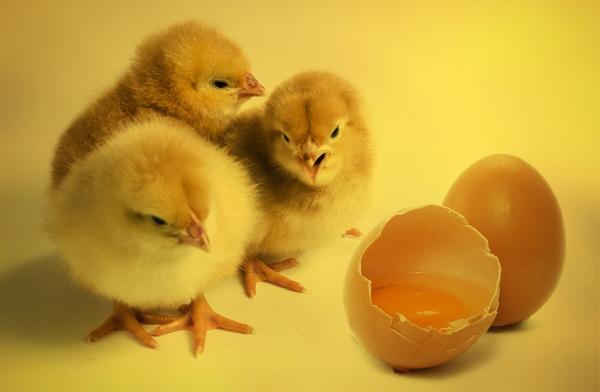On a global basis, each of us consumes 161 eggs, more than thirteen dozen, annually. That requires a lot of chickens, roughly a bit less than one for each of us. But the random way of reproduction creates those males who are “culled” because of their lack of economic value. It is estimated that $500 million is spent on incubating and eliminating the condemned chicks.
Chickens are not considered bright, and few believe them conscious. So, how to manage the excess “males” is stripped of emotional or empathetic considerations for most of us and is subject simply to a cost-benefit economic analysis. Germany and France have banned the practice, requiring producers to raise the males or shut down their plants. The US has turned to a technological solution. The Foundation for Food and Agricultural Research (FFAR), a non-profit created by the US Department of Agriculture, offers an Egg-Tech Prize to develop a technique to identify the egg’s sex before it hatches (in-ovo testing).
There are a number of non-invasive techniques to determine the sex of the egg anywhere from 9 to 13 days into the 21-day incubation. These methods make a small opening in the egg and use imaging or fluid sampling to identify the egg’s sex. These techniques need to scale quite a bit to look at 250,000 eggs daily. In addition, there is a concern that these chick embryos feel pain.
Yes, the definition of pain is indirect, based on movement and physiologic changes from noxious or mechanical stimuli. [1] But studies funded by Germany’s Federal Ministry of Food and Agriculture have identified an elevation of blood pressure and heart rate in chick embryos at day 15 of incubation, which was mitigated by the injection of local anesthesia. Body movement was also increased by those noxious stimuli on incubation days 15-18, again mitigated by applying a local anesthetic. Physiologic activity in the brain was first noted on day 13. As you might suspect, other studies suggest that pain is perceived as early as day 7. Perhaps based upon “an abundance of caution,” Germany has prohibited the destruction of male eggs after day 6 of their incubation.
Another approach is to prevent the creation of male embryos, which is possible because, unlike humans, the hens determine the egg's gender.
“…situations that stimulate glucocorticoid elevation generally appear to result in the production of more female offspring, while situations that elevate testosterone concentrations generally appear to stimulate the production of more male offspring.”
Of course, the hormonal manipulation of chickens is banned.
Finally, we might consider what is termed “dual production.” Before the advent of factory farming, when chickens were more of a cottage industry, the males were allowed to grow for the five months necessary to become an entrée, three-fold longer than the life span of factory farm chickens. [2] The greater costs of housing and feeding for those extra months raise the price considerably.
If we want inexpensive chicken, you must break a few eggs, 6.5 billion. Of course, none of these methods, except for dual-production, can resolve the ethical dilemma that Vox characterizes as “what we’re willing to do to animals in the name of low prices; what we’re willing to do to animals, period.”
Trigger warning
We get a bit edgy now.
- Many of my word choices today act to frame the argument – there is no real difference in culling or killing, but which phrase elicits a more emotional response?
- And consider to what lengths we go in pursuing scientific knowledge to identify an ethical moment for us to continue factory farming – at its core, a problematic tradeoff. That calculus currently depends on the perception of pain rather than a heartbeat, which for a chick embryo is at the beginning of day 3 of incubation. But that beating is of a muscular tube; the heart is only fully formed on day 10.
- And this ethical calculus is not nearly as complicated as it might be because few of us believe chickens are sentient, let alone have souls.
- It doesn’t take a rocket scientist or a brain surgeon to see that what to do with all of those male chicks is an issue echoing as a metaphor in other choices we confront legislatively, judicially, and in our public conversation.
[1] The experience of pain is an ethical consideration in animal testing. The chicken equivalent of a placenta, the chorioallantoic membrane (CAM), is used in studying angiogenesis, xenotransplantation, and virus production.
[2] The lifespan of the chicken on your plate is roughly seven weeks. They are old enough to be outside after about four weeks, so for those free-range chickens on your plate, the outdoor natural life is more a vacation than a lifestyle.
Source: Save the male chicks Vox




